drawings
-
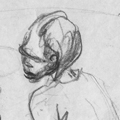
Kimberley Field Drawings
1947 - 1950I was lucky … having known the people … it was easy to mingle in with their life. We’d walk together and go on long journeys, sometimes two or three weeks at a time … When I’d be out in the bush the actual conditions were fairly rigorous — there was no chance of acting like the French artists who’d fix themselves up in a spot, put up an umbrella and paint right there on the spot.
It was necessary to reduce things to a very practical easy-to-carry formula — it was a case of working with sketchbooks and soft pencils. In this way I’d draw ... -
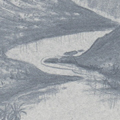
Kimberley & Goldfields
1940s — 1960sThe Kimberley and Goldfields drawings are predominantly selections from six scrolls (†) that were prepared in 1964 for the former Australian Institute of Aboriginal Studies. (Currently the Australian Institute of Aboriginal & Torres Strait Islander Studies — AIATSIS). The scrolls were re-drafted for AIAS from the artist’s sketch-books of the 1940s.
As with much of Elizabeth Durack’s graphic out of sight work it is noteworthy historically as well as artistically.
The drawings highlight differences ... -
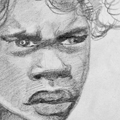
Face Value: Broome & Beagle Bay
1940s...
-
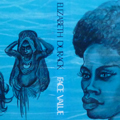
Face Value: Papua New Guinea
1968This section contains selections from the hundreds of portrait and landscape drawings made in 1968 when Elizabeth Durack travelled for the first time through the Territory of Papua New Guinea. She was there, commissioned by Australia's Department of External Territories, to portray the part that women were playing as the country moved towards Independence.
Elizabeth travelled by road, boat and air. She was met and welcomed by mothers and grandmothers, nurses, wives and teachers, nuns and students, villagers and welfare workers, politicians, gardeners, socialites and market-stall holders. Places visited included: Port Moresby, Goroka, Kundiawa, Mt Hagen, Bulolo, Lae, Madang, Wewak, ... -
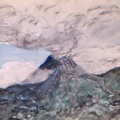
Bougainville Is
1969The Bougainville Island drawings selected here are from a large series of works prepared for ConZinc RioTinto Australia, Melbourne, in 1969.
They have since become part of the RioTinto collection in Perth, Western ...
-
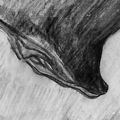
The Living Rock
1950s and 60sExamples from drawings of the Pentacost and Grant Ranges, Kimberley, Western ...
-
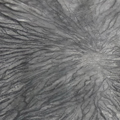
Background to Hamersley Iron
1969 and 1991Background to Hamersley Iron 1969 and 1991.This group of artworks has three related parts.(1) Original field drawings depicting early stages of mining activity and the building of a c400km railway line through Western Australia's Pilbara region.Number of works: 62. Medium: charcoal and pencil on Hamersley Iron's transparent plan paper, each 32 x 46cm. Produced in mid 1969 around Paraburdoo, Mt Tom Price and Dampier. Collection: The Estate of Elizabeth Durack.(2) A series of 11 'Environmental Panels'. Medium: charcoal, ...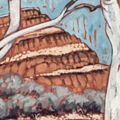
'the beautiful country with a heart of iron ...'
1976The title of this series The beautiful country with a heart of iron ... is from a line in a letter to the artist's son. It refers to the vast iron-ore rich Pilbara region of Western Australia.
These particular harvest of the eye works were exhibited at the Fine Arts Gallery, Perth in ...
Dreaming up the Victoria
1994Dreaming up the Victoria (1994) consists of some 18 large aerial impressions of the Northern Territory’s longest and most majestic river. The pastel drawings depict, and loosely follow, the course taken by Captain John Clement Wickham and Commander John Lort Stokes who in the Beagle had explored and named the river in 1839.
Elizabeth Durack was familiar with the river since the 1930s and on several occasions had sailed along it from The Depot (present-day Timber Creek) and up the coast to Darwin. In 1994 when reading Stokes’ Discoveries in Australia, Journal of a Voyage of Discovery during the Voyage of HMS Beagle, 1837-1843 opportunity arose for ...
Kimberley Calls & Summertime Perth
1950s—80sCollage was another media that appealed to Elizabeth Durack. She employed it through most decades, handled it deftly and through it was able to convey the essentials of places she knew and loved. Northern inland roads, the Swan River and local beaches were favourite subjects for this medium.
Kimberley Calls is the general title for a set of work honouring the Royal Flying Doctor Service of Australia. In April and May 1981 when the RFDS was based in Wyndham, Western Australia, Elizabeth Durack flew with doctors to many remote northern outposts. Revealing an innate sense of design these bold bright works capture the essence and variety of Kimberley landscape ...
'Bett-Bett's wonderful lonely palace ...'
1970s — 1990s, a continuumBett-Bett's wonderful lonely palace ... is a large sequence of out of sight works that was produced over a period of some 20 years.
The title Bett-Bett's wonderful lonely palace ... is from the caption of a photograph in Mrs Aeneas Gunn's Little Black Princess of the Never-Never (1905) a story with which 7 year old Betty Durack had identified when it was read aloud by Loreto nuns during sewing classes in 1922. Some fifty years later when travelling through East Kimberley near the Northern Territory border ...